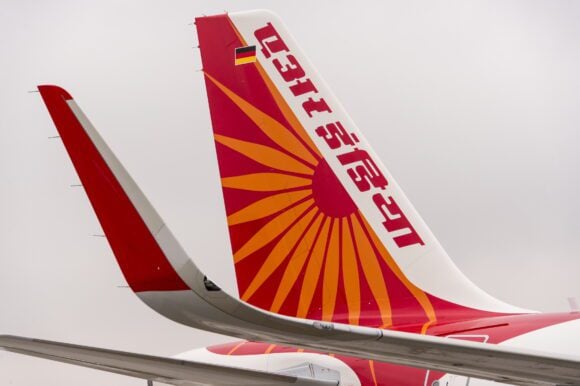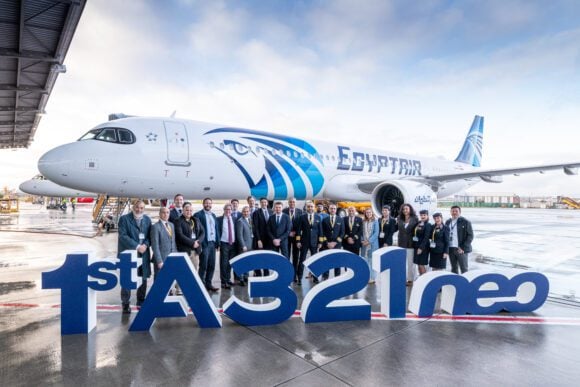Last week it emerged that Boeing is now discussing a 737 MAX10 with customers on a serious level, and that its sales people have been given “authority to offer” the aircraft. The model would be the fifth in the MAX range, augmenting the existing the MAX7, MAX8, MAX8-200, and MAX9.
The MAX10 has the following key changes:
- 66 inches longer than the MAX9
- Single class passenger capacity up to 230
- Slightly higher MTOW
- LEAP-1B Engine
- Trailing-link main gear
- Entry into service approximately 2020
It is useful to recall that the MAX was something of a shotgun marriage that consisted of deploying available technology quickly when Airbus surprised Boeing by offering American Airlines the A320neo when the airline decided to renew its single aisle fleet. Because the A320 and airframe is much newer than the 737, it lent itself to better exploit the next generation engines. Boeing, apparently caught off guard, quickly put together their response, the MAX, which seemingly came from nowhere. The industry was expecting a new aircraft from Boeing, but given the 787 debacle, Boeing couldn’t offer a clean sheet solution fast enough to match or beat Airbus. Up the American deal, Boeing appeared reluctant to re-engine.
Boeing faces difficulty with its MAX sales campaigns at both the bottom and top ends of the range. At the bottom end Bombardier and Embraer offer better options that either Airbus or Boeing. Airbus and Boeing can easily dominate pricing and disrupt the Bombardier and Embraer campaigns – but to what effect? Airbus and Boeing have grown accustomed to mega orders, often for 50+ aircraft, often with equal options.
In the 100 to 130 seat market, aircraft still are sold by the dozens, rather than the hundreds. As we saw with the recent United Airlines 737-700 deal, Boeing won against Bombardier, but the airline later switched the deal to larger models. Airbus and Boeing simply cannot effectively compete (other than price) with the CSeries and E2 models.
At the high end of the single aisle market it’s a two-player contest between Airbus and Boeing. And Boeing’s MAX has been trounced by the A321, outsold by a 5:1 ratio. The MAX10 is a reaction to the poor performance of the MAX9. Is there a path to success for the MAX10 that is better than that for the MAX9?
The path of least resistance for Boeing is to look at who flies the 737-900ER, who has ordered the MAX9 and then market aggressively. The table below lists the orders by customer for the -900ER and MAX9 through 2016. To make things interesting, we have also added the number of 757’s operated by 737-900/MAX9 customers on the list. It is well known the absence of a 757 replacement from Boeing has helped the A321neo and A321LR campaign, which offer the closest performance to the 757-200.
The table does show that some big names (American, Air Lease, Korean, GECAS) seem to favor the A321 solution. These are customers Boring should not have lost.
Since the MAX10 is going to be larger and therefore closer to the capacity of the 757, we think that Boeing is eyeing that market too. From what we know, Boeing has dismissed the 757 long range capabilities as used on the North Atlantic as a niche too small to chase. This thinking is consistent with the MAX10 which is not range focused, but capacity focused. Boeing appears more concerned about speed to market. Is the MAX10 too little, too late?
Reports suggest that United, Delta, Alaska, Air Canada and Lion Air are Boeing’s key MAX10 targets. Looking at the table that is no surprise.
Boeing has continued to refine the MAX product line to be more responsive to customer needs. The MAX7 has grown from 126 to 138 seats in a two-class configuration. The MAX8 evolved with a low cost carrier version that will seat up to 200. This likely cannibalized potential MAX9 sales. It appears that Boeing is tweaking the MAX to market sweet spots. The base MAX8 is a winner in the market and is dimensionally unchanged from the popular 737-800.
Is the optimal way forward for Boeing to convert current MAX9 orders to the larger MAX10? This would provide the program instant momentum. The MAX10 appears to be a better competitor to the A321, which has become a star for Airbus. With newly designed landing gear, the MAX10 will have better runway performance than the MAX9. It my be the better choice for airlines and lessors.
Views: 3





Let’s cross-examinate the capacity of this MAX-10 = MAX-9 + 66″ = 1100″ + 66″ = 1176″ – 10″ = A321 – 10″ … deduct 20″ for legroom up front in row 1 less passageway @ emergency exits overwing = 2 x 10″ less ditto aft of the wingbox = 36″ = (net) 1166″ – 20″ – 20″ – 36″ = free cabin space 1090″ … I can’t see how Boeing can fit more than 28 rows or 228 seats unless reducing the pitch to 27″ for a dozen rows or so ? (cabin length is from rhs doorsill 1L to lhs doorsill 4L = eg exactly 56 frames = 21″ x 56 = 1176″ for A321))